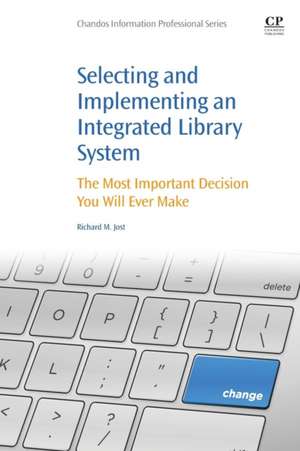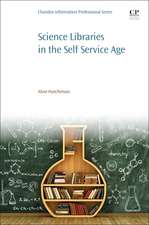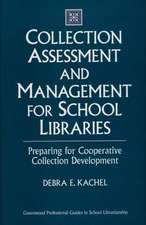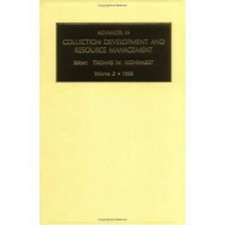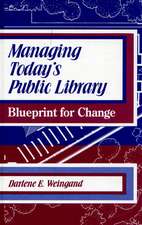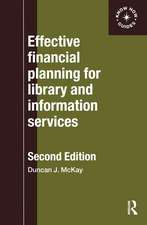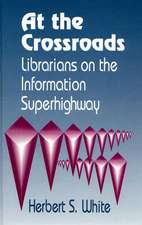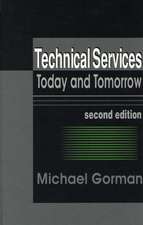Selecting and Implementing an Integrated Library System: The Most Important Decision You Will Ever Make
Autor Richard M Josten Limba Engleză Paperback – 16 oct 2015
As professionals, they will need to develop numerous skills, both technological and managerial, to successfully meet these challenges. This book provides a foundation for this skillset that will develop and acquaint the reader with a broad understanding of the issues involved in library technology systems.
Although a major topic of the book is integrated library systems (a fundamental cornerstone of most library technology), the book also explores new library technologies (such as open source systems) that are an increasingly important component in the library technology world. Users will find a resource that is geared to the thinking and planning processes for library technology that emphasizes the development of good project management skills.
- Embraces both technology and management issues as co-equals in successful library migration projects
- Based on the experiences of a 20+ year career in libraries, including three major automation project migrations
- Includes increasingly relevant subject matter as libraries continue to cope with shrinking budgets and expanding library demands for services
- Contains the direct experiences of the University of Washington system in the Orbis-Cascade Alliance project, a project uniting 37 libraries across two states that combined both technical and public service functions
Preț: 326.09 lei
Preț vechi: 354.44 lei
-8% Nou
Puncte Express: 489
Preț estimativ în valută:
62.41€ • 64.91$ • 51.52£
62.41€ • 64.91$ • 51.52£
Carte tipărită la comandă
Livrare economică 07-21 aprilie
Preluare comenzi: 021 569.72.76
Specificații
ISBN-13: 9780081001530
ISBN-10: 0081001533
Pagini: 126
Dimensiuni: 152 x 229 x 10 mm
Greutate: 0.2 kg
Editura: ELSEVIER SCIENCE
ISBN-10: 0081001533
Pagini: 126
Dimensiuni: 152 x 229 x 10 mm
Greutate: 0.2 kg
Editura: ELSEVIER SCIENCE
Cuprins
1. Introduction
2. History of library automation
Chapter two
1. Record types (bibliographic, serials, holdings, patron)
2. Library workflows (how does material move from one department to another)
Chapter three
1. Systems librarianship (who are the major players in a library migration project)
2. Human resources (what staff challenges may mangers and systems librarians encounter during a library migration project)
Chapter four
1. Project management (how to develop good project management skills)
2. Change management (how to understand and control the change process)
Chapter five
1. The automation marketplace (who are the current vendors and systems)
2. Needs assessment (how to determine if you really need to migrate to a new library system)
3. Technical services vs. public services solutions (what features might the various library departments be looking for in a new library system)
4. Online catalogs and discovery platforms (what are the options for the public face of the library)
Chapter six
1. Request for Proposal – RFP (why an RFP is important and what are the main components)
Chapter seven:
1. Open source software (what is open source and why would libraries consider this a viable option for a system migration)
Chapter eight
1. Data migration (how to transfer data from one system to another and why this is a critical need)
Chapter nine
1. Incorporating library 2.0 technology into library operations (what role should new technologies such as social media play in the library environment?)
Chapter ten
1. The future of library technology (what new trends in library software and library cooperative projects may spur the development of new technology solutions to meet the new paradigms).
2. History of library automation
Chapter two
1. Record types (bibliographic, serials, holdings, patron)
2. Library workflows (how does material move from one department to another)
Chapter three
1. Systems librarianship (who are the major players in a library migration project)
2. Human resources (what staff challenges may mangers and systems librarians encounter during a library migration project)
Chapter four
1. Project management (how to develop good project management skills)
2. Change management (how to understand and control the change process)
Chapter five
1. The automation marketplace (who are the current vendors and systems)
2. Needs assessment (how to determine if you really need to migrate to a new library system)
3. Technical services vs. public services solutions (what features might the various library departments be looking for in a new library system)
4. Online catalogs and discovery platforms (what are the options for the public face of the library)
Chapter six
1. Request for Proposal – RFP (why an RFP is important and what are the main components)
Chapter seven:
1. Open source software (what is open source and why would libraries consider this a viable option for a system migration)
Chapter eight
1. Data migration (how to transfer data from one system to another and why this is a critical need)
Chapter nine
1. Incorporating library 2.0 technology into library operations (what role should new technologies such as social media play in the library environment?)
Chapter ten
1. The future of library technology (what new trends in library software and library cooperative projects may spur the development of new technology solutions to meet the new paradigms).
